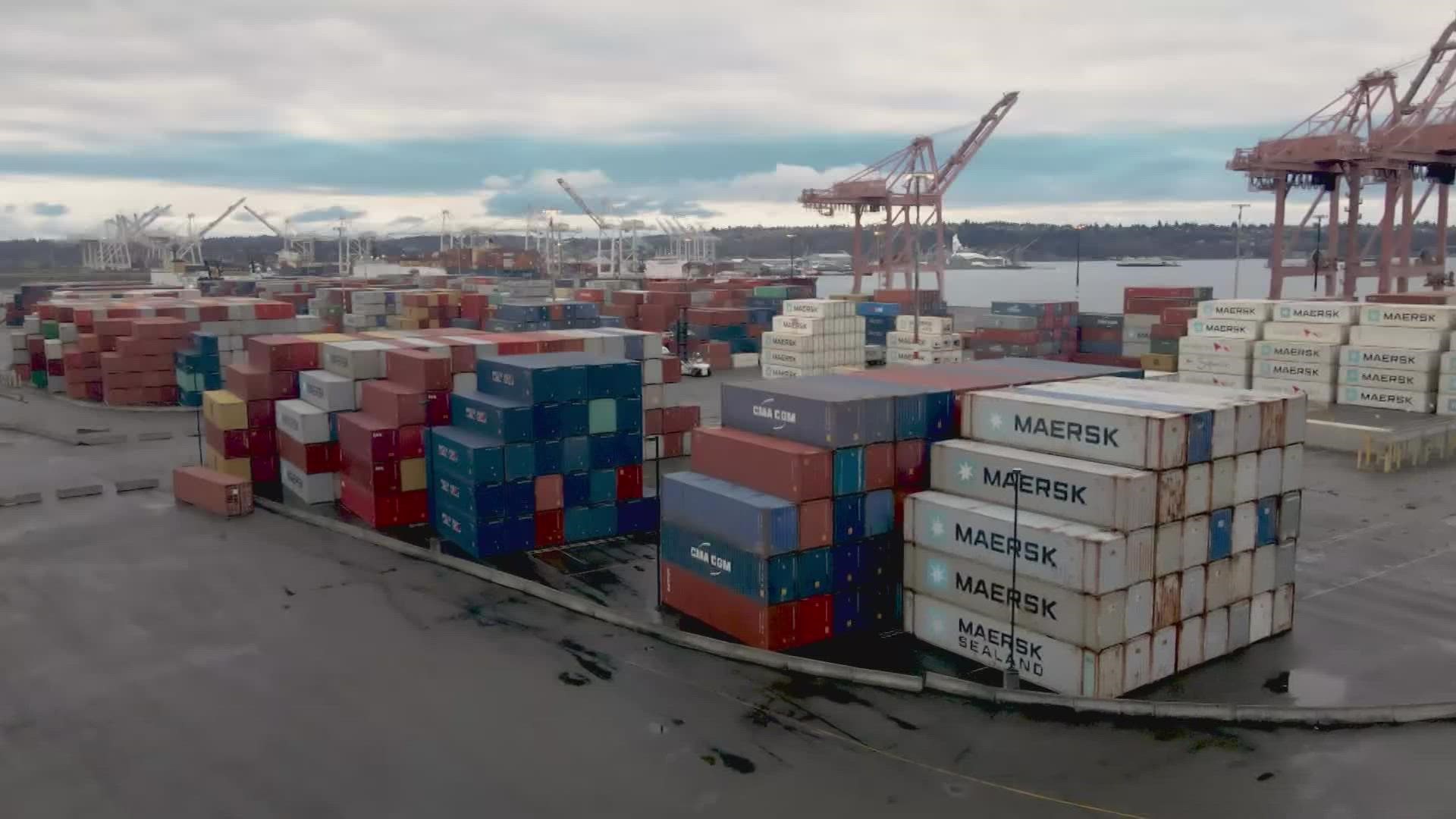SEATTLE — Nearly $9 billion of the $1.2 trillion Biden infrastructure plan is heading to Washington State, according to Congresswoman Pramila Jayapal.
Some of that money will be used in the short term to help backed-up ports get unsnarled, particularly as it involves trucks hauling containers in and out of the port.
Seventeen billion dollars is allocated for ports nationally.
“We don’t have all the pieces built around the port for trucks to be able to get in and out,” said Jayapal, who is a Seattle based Democrat from District 7. “We also have money for training to bring more folks in because we do have workforce shortages as well.”
Ports in the northwest and elsewhere along the west coast are facing a truck driver shortage.
Truck drivers are in short supply in part because they’re having to make more local trips to haul empty containers to be stored at the Port of Seattle’s Terminal 46, which a few months ago sat empty awaiting conversion into a cruise ship terminal.
Now Terminal 46 is stacked with more than 7,000 containers.
The Northwest Seaport Alliance, which operates cargo handling operations at the Port of Seattle and the Port of Tacoma considers Terminal 46 a bit of a safety valve, a place to park unused containers, and to alleviate the shortage of chassis, the truck frame and wheels that containers ride on when they travel over the roads.
At the Port of Tacoma, another storage yard is holding 4,000 containers.
The Northwest Seaport Alliance is hoping for some relief soon as it plans to open Terminal 5 up in West Seattle starting in January.
The massive terminal has been undergoing redevelopment for years, and features what’s called an “On Dock Rail,” according to Port of Seattle Commission President Fred Felleman.
That means container hauling trains can drive right onto the terminal to load up instead of using trucks to haul containers from the docks to rail yards where trains are loaded for inland distribution destinations like Chicago.

